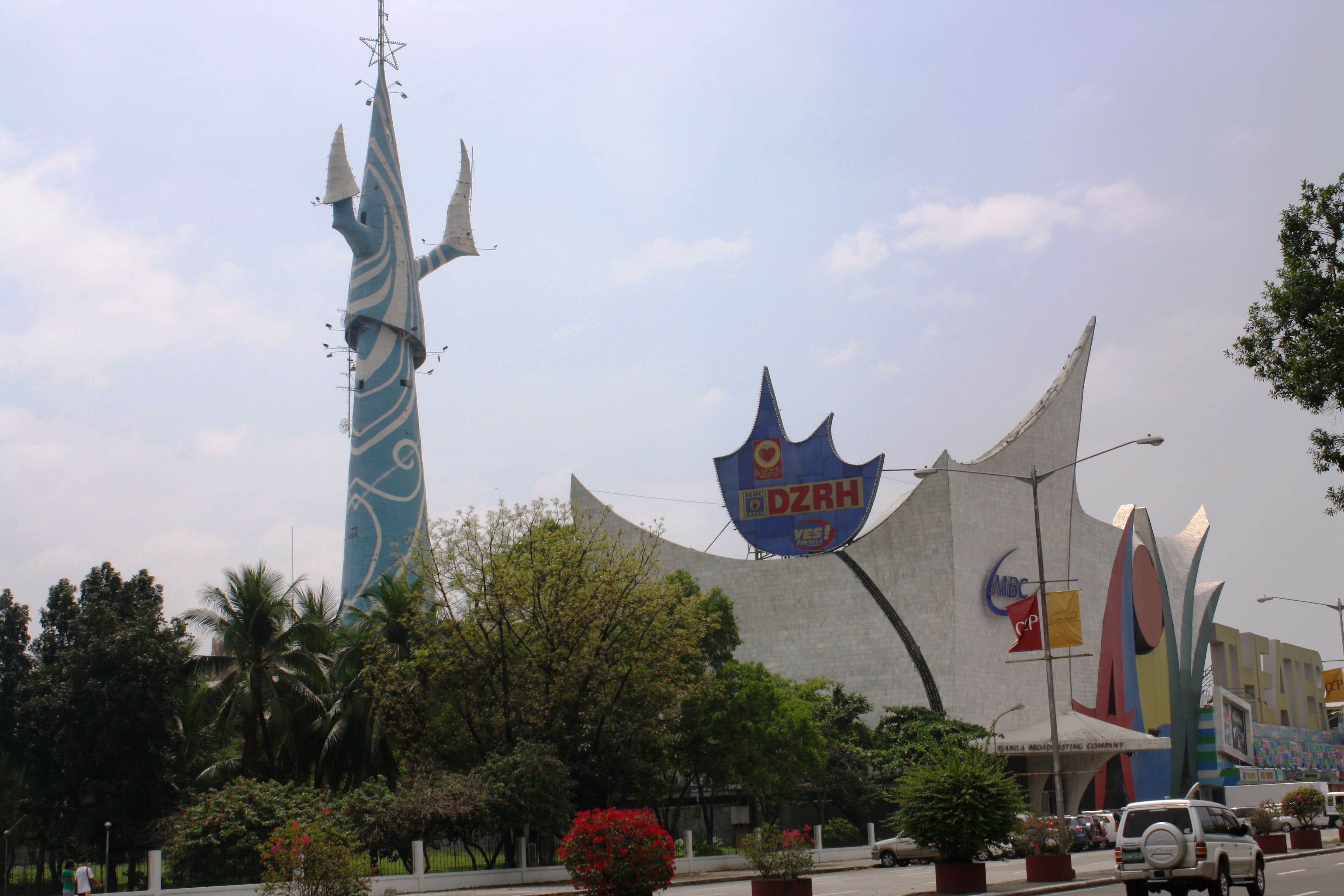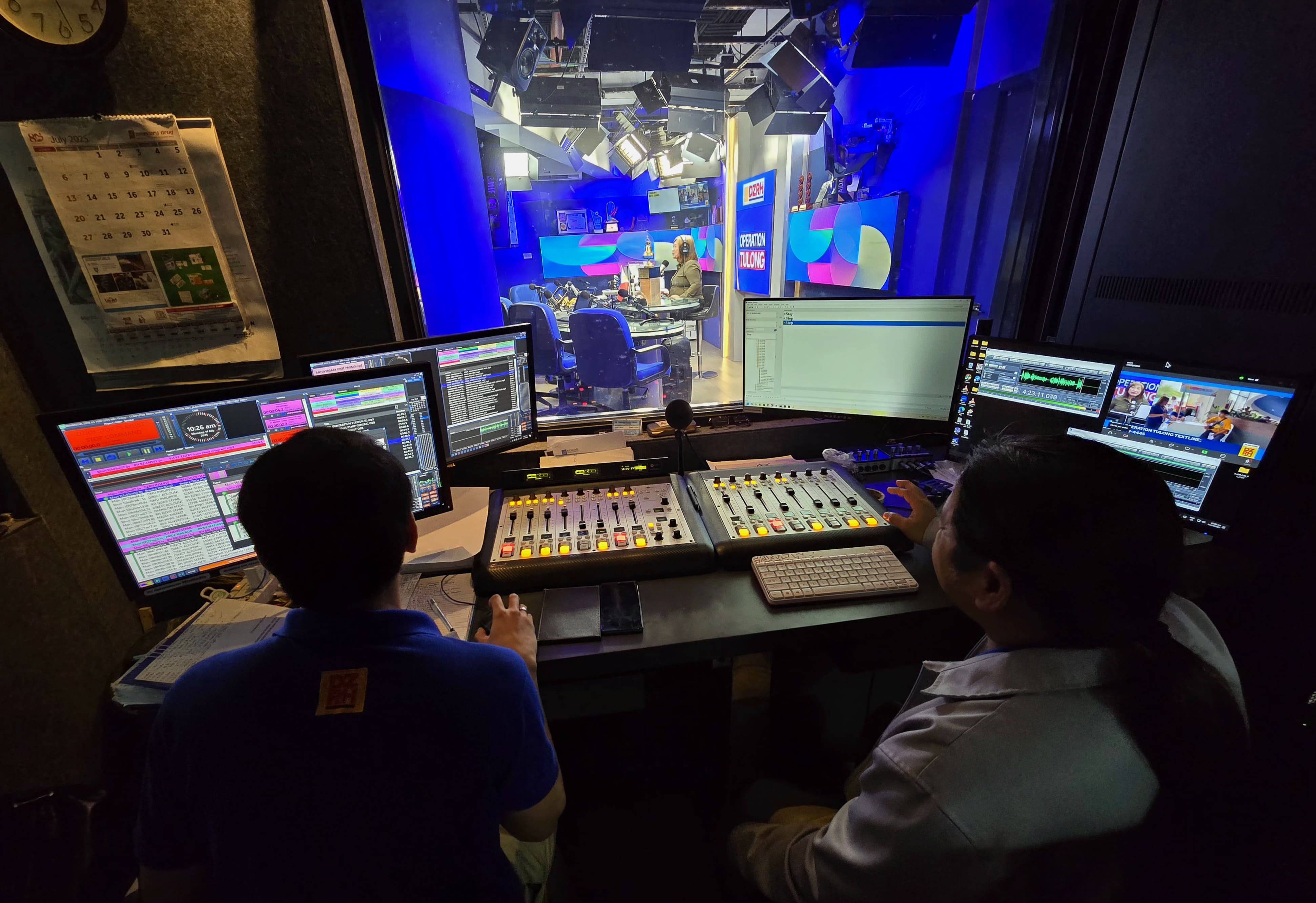

Most of the public knows DZRH because of the voices that shaped the emblem of the Philippines’ oldest radio station. With back-to-back awards, recognition, and credibility in news delivery, the station’s journalists and voice actors have all contributed to DZRH’s enduring force as one of the country’s top AM radio stations.
Although the voices of the greats may have built the foundation of what DZRH is today, it was also through the people working behind the scenes that we saw those voices take shape.
Through the radio and television technicians who ensure smooth operations for the broadcasts, the drivers who get reporters from place to place, the news writers, the production and television crew, the digital team, and the staff and volunteers for Operation Tulong.
While it may be a job with little visibility, some take great pride in the work they do, like Rennie Abinales, DZRH’s Radio Chief Technician.
He has been with DZRH since 2003, starting as a radio technician, before climbing up the ranks as the radio’s Chief Technician in 2018.

Mr. Rennie Abinales during the Operation Tulong broadcast.
Contrary to what most people know, there was a time when audio technicians were not confined to an office space and also accompanied reporters outside during special coverage to set up equipment for live broadcasts.
A Seamless Transition
It was 2012, the year that former Chief Justice Renato Corona’s impeachment proceedings began. The trial was televised live and was expected to end in three months. As a big cover story for the nation, media practitioners rushed to the location where the proceedings were taking place.
Abinales said they had to set up audio equipment outside and schedule their shifts as the trial lasted for a while. For the live audio to reach the base and other locations from the coverage area, technicians had to use radio frequency to connect the landline.
“Tuloy-tuloy na broadcast na ‘yun. Basta naka-ready yung mixer namin. May microphone sila [reporters], may communication kami papunta ng base. Anytime mag-report sila, tuloy-tuloy na ‘yun [broadcast].” Abinales recalled, explaining that DZRH had yet to expand its reach to television at the time.
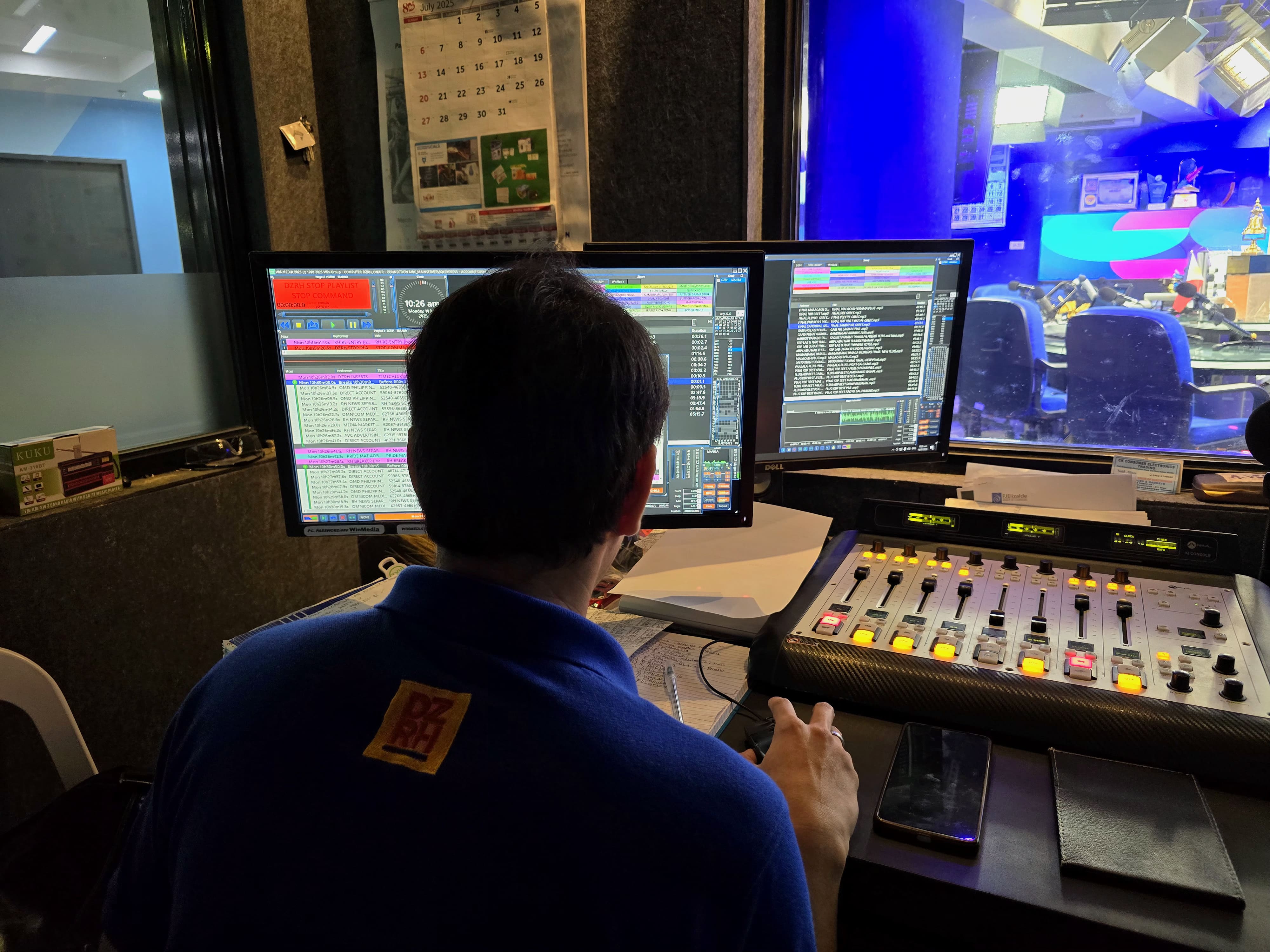
A radio technician monitors the audio during the Operation Tulong broadcast.
Now that technology has improved, Abinales pointed out that their job is not as complicated as before. This time, their department is not the only one working behind the scenes, as they also work hand-in-hand with the television technicians during livestreams.
Working as a Team
There were times, however, when unexpected challenges arose and the team was forced to adapt. Months after the devastating fire that enveloped the whole office area, Aliw Theater, and the amusement park Star City, the whole country was put on lockdown.
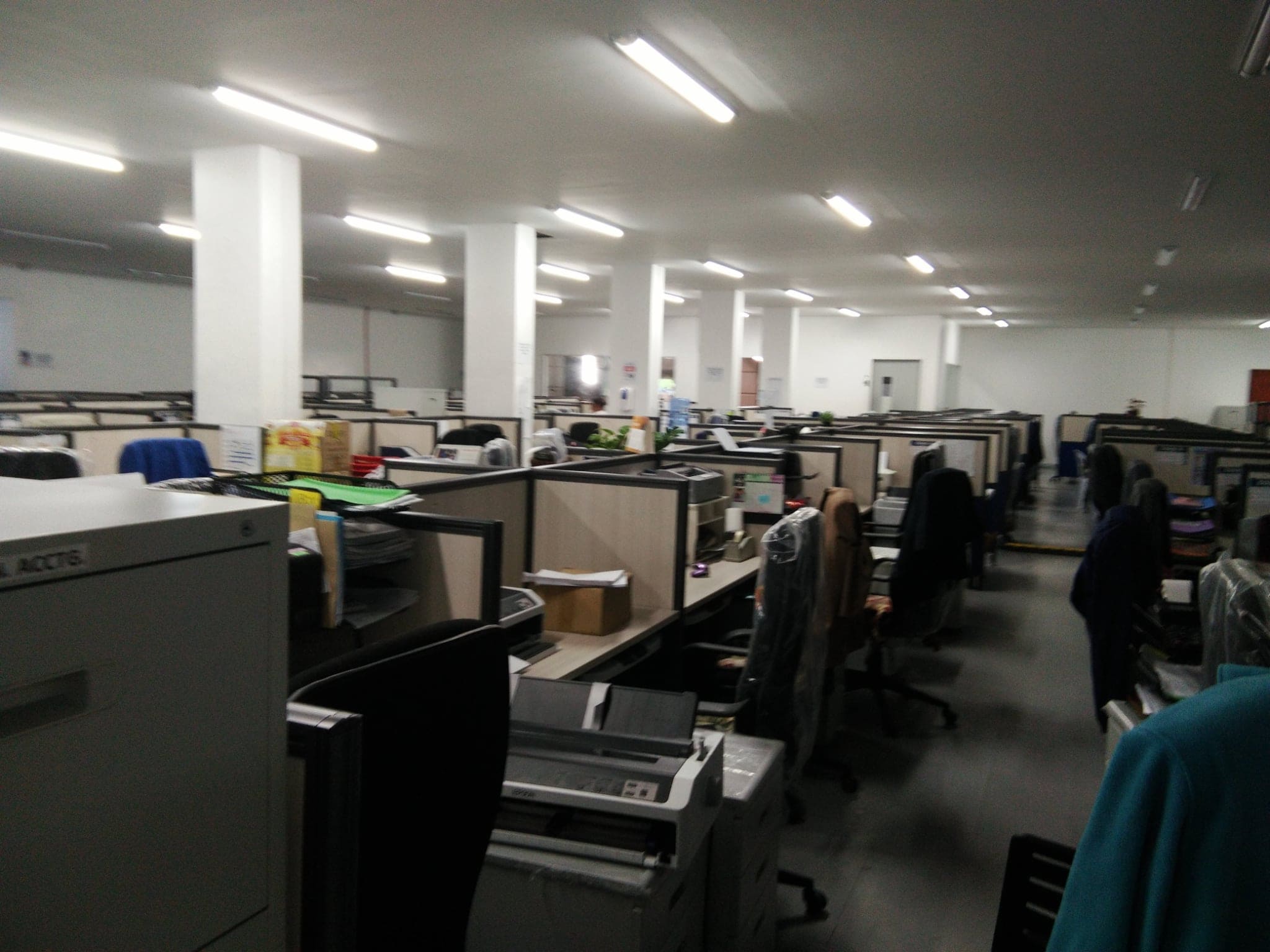
The DZRH office during the COVID-19 pandemic. Photo provided by Rennie Abinales.
Abinales said only the AM radio’s technical team was permitted to work on-site, in a makeshift office near the Cultural Center of the Philippines (CCP). It was also where they all ate, slept, and took turns with their shifts. Anchors and reporters maximized the use of technology at the time and used applications like Zoom to resume broadcasting from the comfort of their homes.
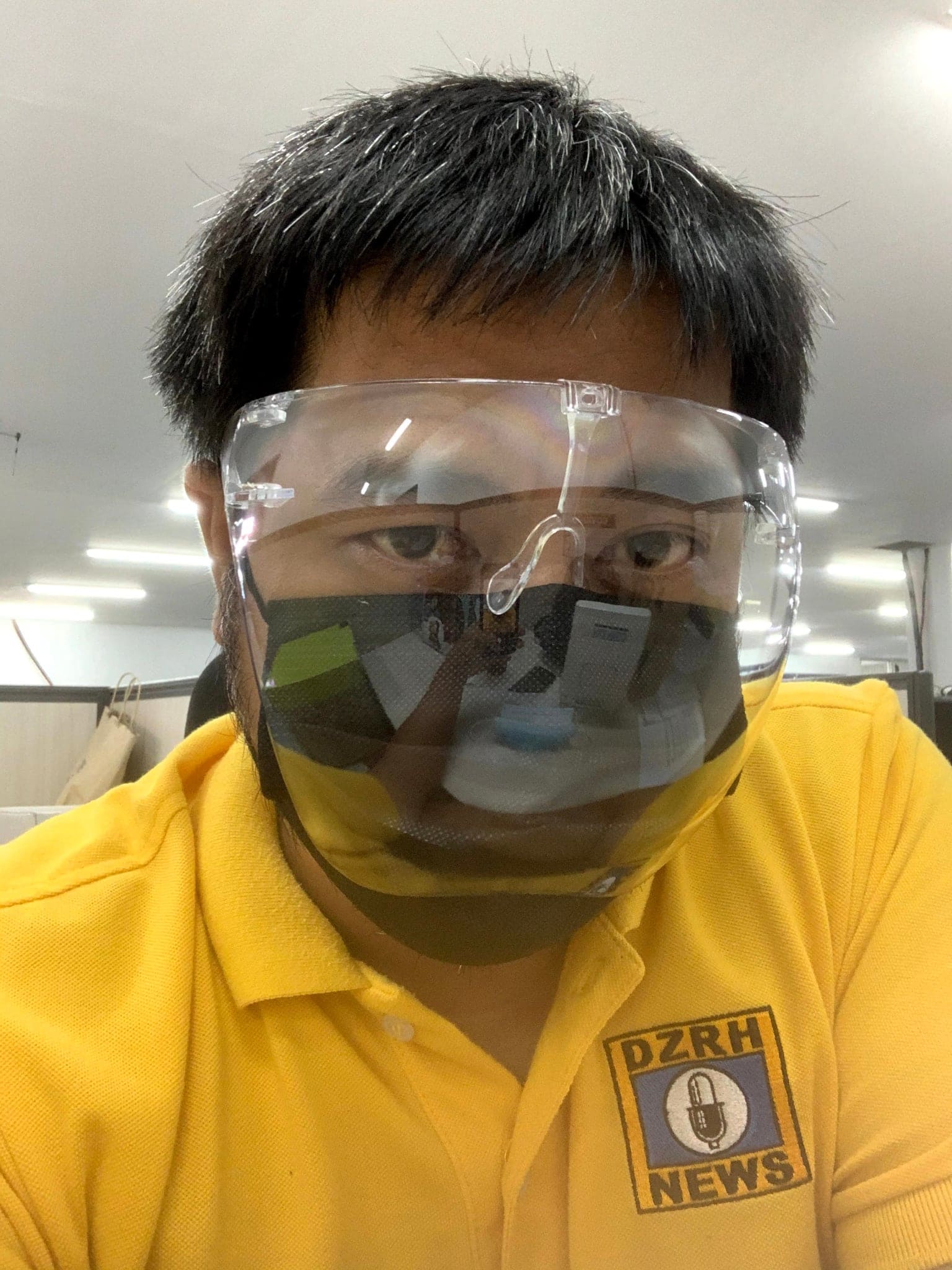
Mr. Rennie Abinales is on duty during the COVID-19 pandemic. Photo provided by Rennie Abinales.
However, technicians were locked in the tiny space and had to quickly set up their equipment to publicly air the broadcast.
“Technician lang nandoon. Ang masakit kasi noon, yung pala pinaka-challenging. Kasi nagkaroon ng sunog tayo noon. At the same time, nasundan ng pandemic. Yung pandemic na ‘yan, technician ang natira [on-site],” he narrated.
“Pero siyempre, yung dedication kasi ng mga tech, yung kagandahan non. Kasi that time is, chief tech na ako. Giving credits sa mga technicians, naandon pa rin yung puso nila sa pagtatrabaho, kahit na, yung panahon na ‘yun—na pandemic—naandon rin silang lahat, pare-pareho,” he added.
This also allowed their team to connect and forge a bond deeper than before.

The DZRH staff during the nationwide lockdown. Photo provided by Rennie Abinales.
“Actually nag-build [‘yun]...ng bond sa amin lalo eh. Nabuo yung bonding. Kasi imagine mo, sabay-sabay kayong kumakain. Misan matutulog na lang, nagkukwentuhan pa kayo, nagbibiruan pa. Kasi ‘yun yung time na parang kami yung pamilya,” Abinales said.
“So ‘yun, challenging ‘yun…hindi lang sa amin, [pati na] sa buong kumpanya. Kasi imagine mo, galing tayo sa sunog, hindi pa nagagawa itong bagong building, nagkaroon [pa] ng pandemic, challenging sa lahat ‘yun,” he added.
Although the nationwide lockdown was something they did not anticipate, the Chief Technician pointed out that his seniors had taught him the importance of always being prepared for such cases. While DZRH’s technical group had been through so many challenges, Abinales highlighted that they had always worked as a group through it all.
“Ang kagandahan lang kasi, magkakasama [kami] lagi gumagalaw. Isang grupo. Pinakamahirap kasi sa isang kumpanya, for example, lalo na sa isang department, kung hindi kayo magkakasundo. Kasi doon nasisira pati trabaho. Dyan darating yung hindi ka na rin sisipagin na pumasok,” he emphasized, adding that their bond remains strong to this day.
The MBC Media Group Office before it was renovated.
‘Kailangan mo rin mag-adjust’
Apart from coordination, Abinales pointed out that having the willingness to listen and learn from his colleagues, no matter their age, is crucial for their department’s continuous advancement.
“Basta willing ka na mapatakbo ng maganda yung isang department, uunawain mo ‘yun [tao], kailangan mo rin mag-adjust. Kung ang alam ko technology nun eh, hanggang typewriter lang, kailangan alam ko rin yung mga computer,” he stated. “Adjustment, siyempre. Kasi kailangan yun...As engineering kasi parang doctor rin [na] tuloy-tuloy yung pag-aaral mo.”
“Hindi lang sa equipment, pati sa mga tao. Kasi para makahawak ka ng isang tao, dapat makilala mo rin sila,” he added.
The DZRH Radio tech booth during a broadcast for Operation Tulong.
If someone’s suggestions are doable or can benefit the department, Abinales said leaders should consider applying them. To him, generational differences are an opportunity to learn and help each other.
“Ang laking contribution non. Kasi hindi lang galing sa isang senior, galing na rin sa bata,” he said.
No role is big or small in a newsroom. In a room filled with pressure and urgency, DZRH’s enduring voices are magnified by the unsung heroes who clock in every day—at great personal sacrifice—and whose contributions often go overlooked in a normal newsroom. As the advancement continues, we can only hope that establishing a good rapport remains as one of the criteria for excellence.
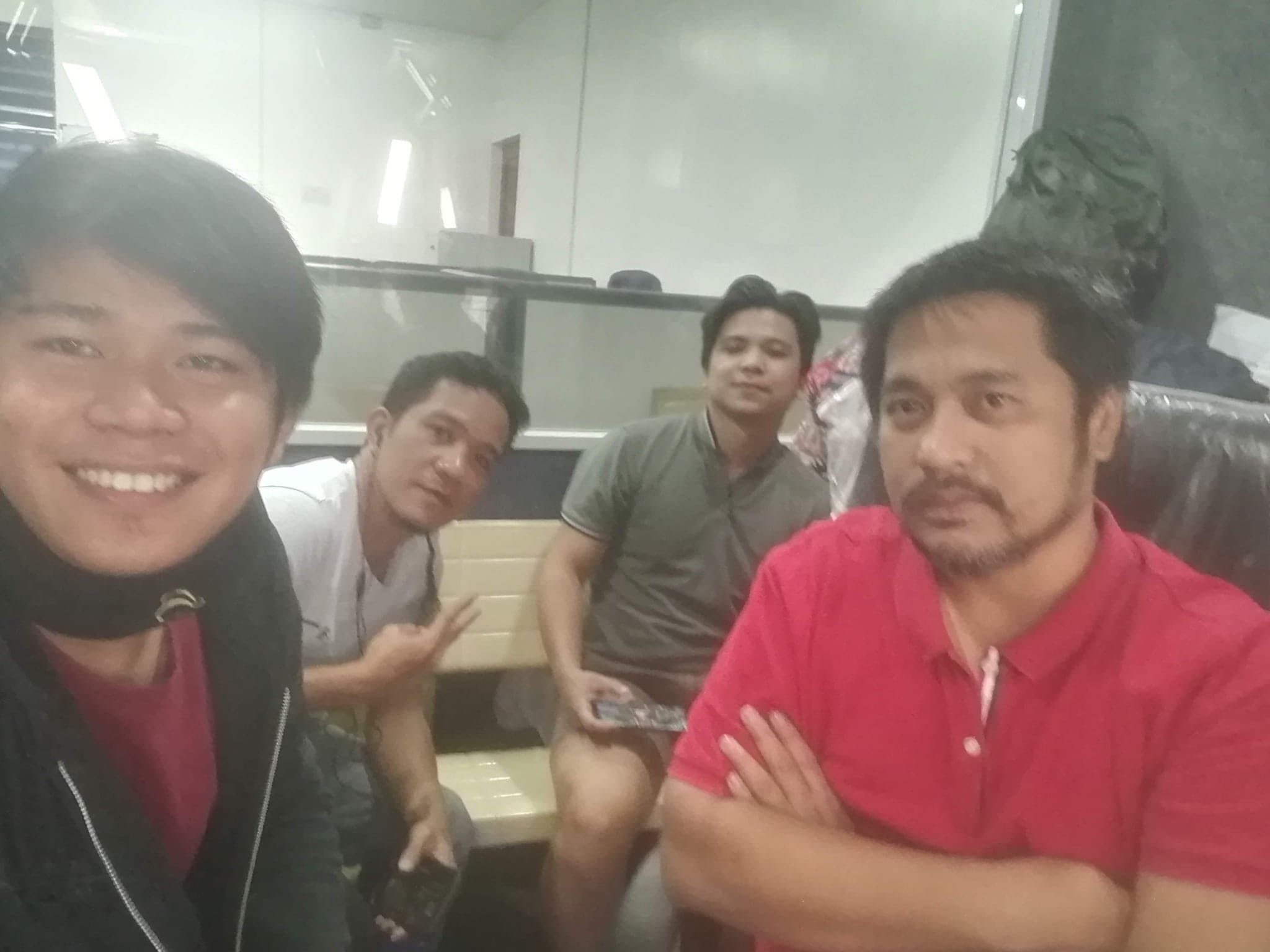
The DZRH technicians during the COVID-19 lockdown. Photo provided by Rennie Abinales.
“Kahit sabihin mo na ‘wag ka na lang doon sa goal na mag number one. Kahit doon ka na lang sa goal na maging maayos yung department mo. Kasi tutuloy na ‘yan. Parang chain [of reaction] na ‘yan na tutuloy sa pagiging number one natin,” Abinales said in closing.
